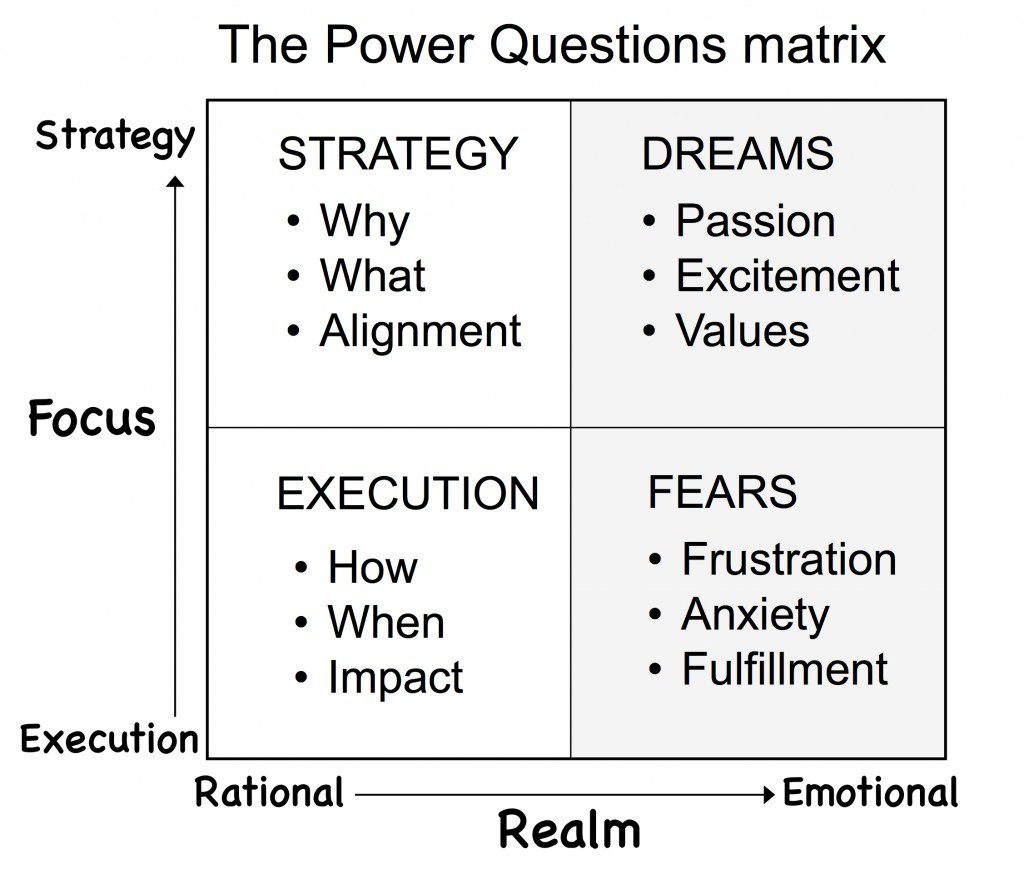
How To Ask Powerful Questions
I was having breakfast one morning with the CEO of a large professional firm. He was stepping down after nearly 10 years in the role. He had a busy morning coming up, and after we had chatted for a while, he flagged the waiter for the check.
I then asked him a very simple question: “Roger, you’ve had an extraordinary career, and accomplished so much…Is there something else you’d like to achieve—some dream that you’d like to follow?” Roger put his coffee down, and gave me a thoughtful look. He smiled. Then, after a further pause, he began to tell me about something very important to him personally that he wanted to develop and focus on. The exact nature of that ambition, which involved a nonprofit initiative, is not really relevant right now. What is relevant is that we continued to talk for another 45 minutes—way beyond our breakfast appointment. And it was probably the most interesting and passionate discussion we had ever had together.
That question—whose answer I genuinely wanted to hear—simultaneously moved us from the past (his legacy, which so many were talking about) to the future; from the general to the personal (his dream); and from the analytical to the emotional. It created a wonderful, breakthrough conversation.
In my new book, Power Relationships, I describe the twentieth law of relationships in Chapter 20: It’s better to know the right questions than to have all the answers.
The 1988 winner of the Nobel Prize for literature, Naguib Mafouz, put it this way: “You can tell if a man is clever by his answers. You can tell if a man is wise by his questions.”
One helpful way of identifying the different types of questions you should be asking is to think about two key dimensions.
- First, are you focusing on goals and strategy—the big picture—or on implementation and execution?
- Second, are you in the realm of the intellect or of the emotions?
If you combine these two dimensions you get four quadrants. I’ll walk you clockwise around this “Power Questions matrix,” shown below.
In the lower left quadrant, you’ll ask rational or analytical questions about execution: “How are you going to do that” or “What is your timing?” or “How will that initiative impact your ability to stay close to your customers?” and so on.
In the upper left quadrant, you’re still focused on rational or analytical questions, but now you’re talking about strategy or the big picture. You might ask questions to get at higher-level goals: “Why do you want to do that?” or “What are your most important priorities for this year?” or “What is the business goal driving this program?”
Sometimes, a client starts the conversation in the lower left and you have to bring them up to the goals and strategy quadrant in order to really understand what they are trying to accomplish.
But remember, facts tell and emotions sell. You must also understand the emotional or personal side of the issue. So in the upper right quadrant you might ask questions like, “As you look ahead to the next couple of years, and the various initiatives you have underway, what are you most excited about?” You see, the same question in the upper right quadrant—which is on the analytical side of the matrix—might sound like “What are your most important goals for this year?” The former will yield a very different—and more heartfelt—response than the latter.
Finally, in the lower right quadrant you need to ask questions about fears, anxieties, and frustrations; as well as about personal fit and fulfillment. For example, “What parts of your implementation program have been most frustrating?” or on a personal level, “What part of your job is most fulfilling to you?”
So when you next go to meet with a client, think about formulating questions that address these key dimensions: implementation versus strategy; and the rational or analytical versus emotional. Pay especial attention to the two right-hand quadrants, where you ask questions in the emotional realm. You’ll be surprised at how interesting the conversation becomes when you move from the left, analytical brain to the right brain.
What powerful questions have you asked in these four different quadrants? Leave a comment, below.
**************
I’ve produced a short, 3-minute video for you on the Twentieth Law of Relationships. In it, I discuss power questions you can put to use immediately.

